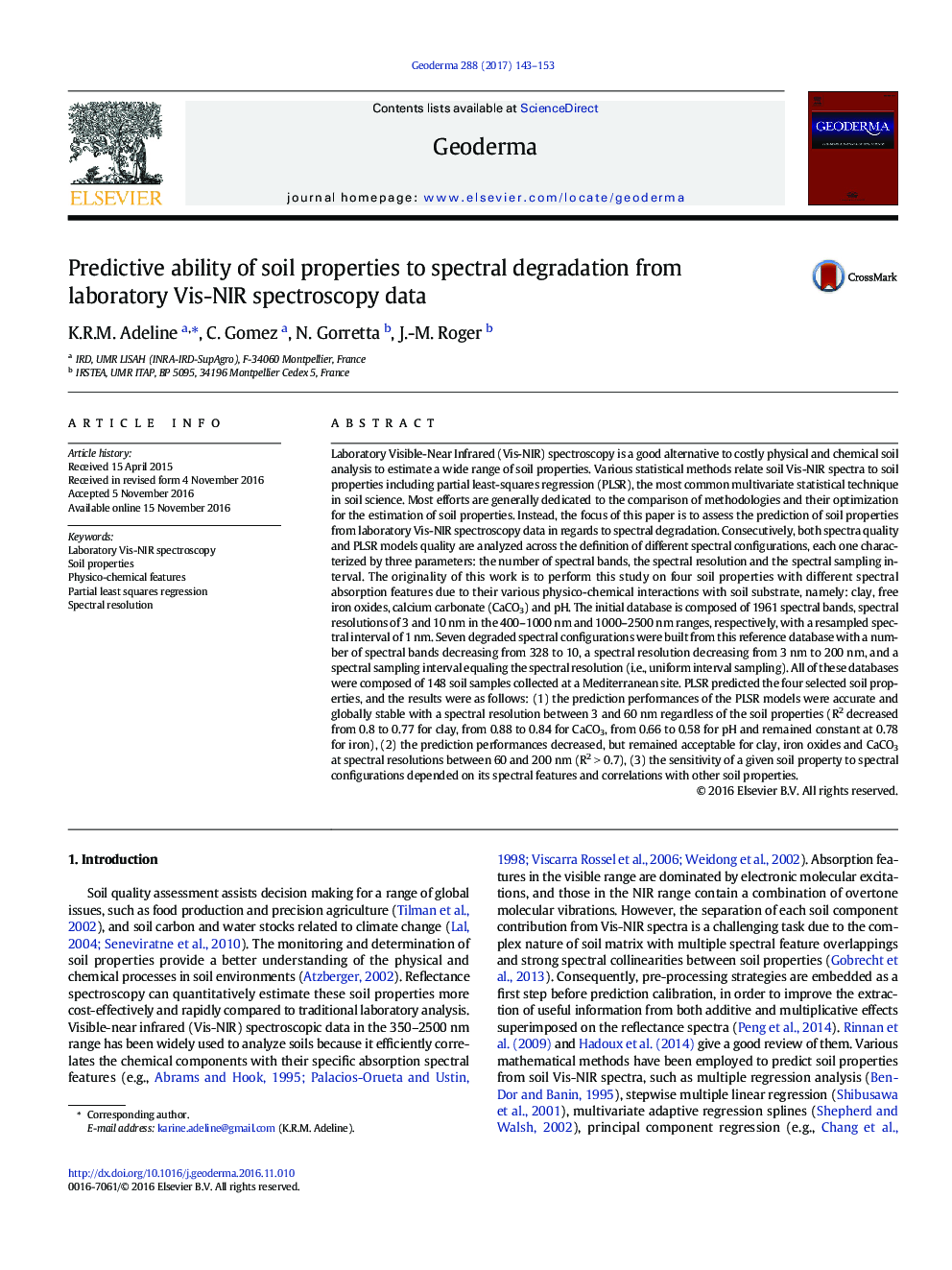| کد مقاله | کد نشریه | سال انتشار | مقاله انگلیسی | نسخه تمام متن |
|---|---|---|---|---|
| 5770493 | 1629429 | 2017 | 11 صفحه PDF | دانلود رایگان |

- Clay, free iron, calcium carbonate and pH were predicted from Lab Vis-NIR spectra.
- Eight spectral resolutions were tested from 3Â nm to 200Â nm.
- PLSR predictive ability is poorly impacted by the spectral degradation.
- All soil properties are predictable until a spectral resolution of 60Â nm.
- Spectral features and correlations between soil properties explained the results.
Laboratory Visible-Near Infrared (Vis-NIR) spectroscopy is a good alternative to costly physical and chemical soil analysis to estimate a wide range of soil properties. Various statistical methods relate soil Vis-NIR spectra to soil properties including partial least-squares regression (PLSR), the most common multivariate statistical technique in soil science. Most efforts are generally dedicated to the comparison of methodologies and their optimization for the estimation of soil properties. Instead, the focus of this paper is to assess the prediction of soil properties from laboratory Vis-NIR spectroscopy data in regards to spectral degradation. Consecutively, both spectra quality and PLSR models quality are analyzed across the definition of different spectral configurations, each one characterized by three parameters: the number of spectral bands, the spectral resolution and the spectral sampling interval. The originality of this work is to perform this study on four soil properties with different spectral absorption features due to their various physico-chemical interactions with soil substrate, namely: clay, free iron oxides, calcium carbonate (CaCO3) and pH. The initial database is composed of 1961 spectral bands, spectral resolutions of 3 and 10Â nm in the 400-1000Â nm and 1000-2500Â nm ranges, respectively, with a resampled spectral interval of 1Â nm. Seven degraded spectral configurations were built from this reference database with a number of spectral bands decreasing from 328 to 10, a spectral resolution decreasing from 3Â nm to 200Â nm, and a spectral sampling interval equaling the spectral resolution (i.e., uniform interval sampling). All of these databases were composed of 148 soil samples collected at a Mediterranean site. PLSR predicted the four selected soil properties, and the results were as follows: (1) the prediction performances of the PLSR models were accurate and globally stable with a spectral resolution between 3 and 60Â nm regardless of the soil properties (R2 decreased from 0.8 to 0.77 for clay, from 0.88 to 0.84 for CaCO3, from 0.66 to 0.58 for pH and remained constant at 0.78 for iron), (2) the prediction performances decreased, but remained acceptable for clay, iron oxides and CaCO3 at spectral resolutions between 60 and 200Â nm (R2Â >Â 0.7), (3) the sensitivity of a given soil property to spectral configurations depended on its spectral features and correlations with other soil properties.
Journal: Geoderma - Volume 288, 15 February 2017, Pages 143-153